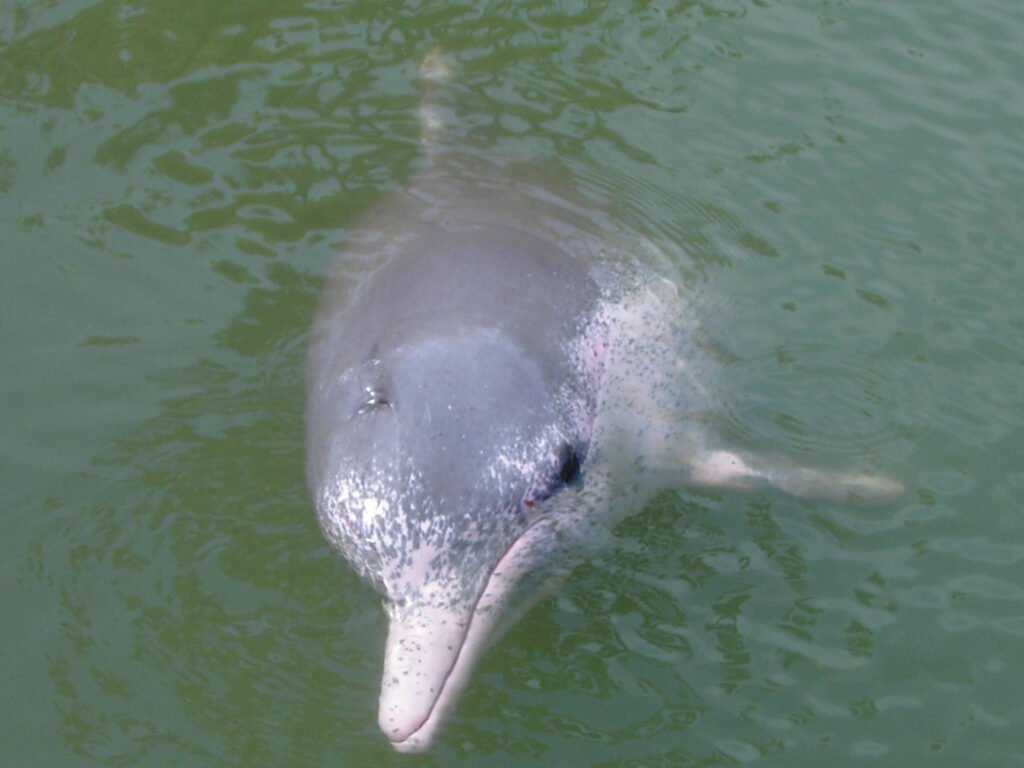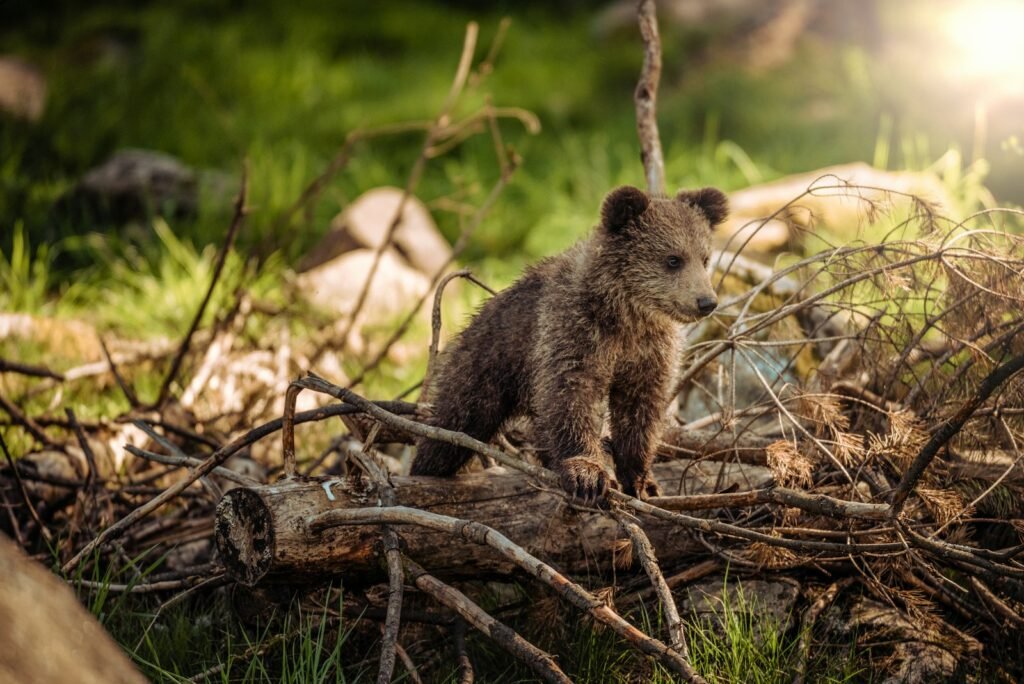Picture yourself on a fishing boat in Louisiana, surrounded by the familiar blue you’ve navigated for decades. Suddenly, something breaks the surface that makes you question your eyesight. A flash of bright pink emerges from the depths, unlike anything you’ve ever seen. This wasn’t a dream or a trick of the light.
This extraordinary moment became reality for Houston fisherman Thurman Gustin during his July 2023 expedition to Cameron Parish, Louisiana. His encounter with rare pink dolphins has captivated marine biologists and wildlife enthusiasts worldwide. These remarkable creatures challenge everything we thought we knew about dolphin pigmentation and offer a glimpse into the incredible genetic diversity of marine life.
Record of Recent Pink Dolphin Encounters

Thurman Gustin was out fishing in a Louisiana channel in July 2023 when he spotted something surprising in the water: two bright pink dolphins. Gustin has been fishing along a river in Cameron Parish, Louisiana, for more than 20 years.
Gustin said he has fished in that body of water for 20 years, and had never before seen a pink dolphin swimming there. Luckily, he managed to quickly capture one of the pink dolphins on video. The dolphin was among “several” swimming in the area, he said, adding that the large one he recorded wasn’t the only pink dolphin among the pod.
Meet Pinky: Louisiana’s Famous Pink Celebrity

Locals speculate the recently filmed dolphin may have been “Pinky,” a bubblegum-colored cetacean that has been swimming in near the Gulf of Mexico for about 16 years. The dolphin, which has been nicknamed “Pinky,” has lived in the lake since 2007. It was first spotted by Erik Rue, who works for the local Calcasieu Charter Service in Lake Charles, Louisiana.
Pinky is a “well-known resident of that area and is often seen in those ,” the Audubon Coastal Wildlife Network, a marine mammal rehabilitation nonprofit, says. Since then, he added, Pinky’s been a local celebrity, where people take trips on Rue’s charter in hopes to get a glimpse of her.
The Science Behind Pink Coloration

Albinism is a condition caused by mutations in genes that affect melanin production. A lack of melanin – the pigment that affects the color of eyes, skin and fur – often causes animals to appear white. In albino dolphins, however, blood vessels can be visible through their colorless skin, making them appear pink.
Her reddish eyes are “the hallmark” of the trait, Greg Barsh, who studies the genetics of color variation, told Nicole Mortillaro of Global News in 2015. The two obvious signs of albinism are reddish eyes and blood vessels, in which Pinky both possesses which are evident from the pale almost translucent skin that lacks much pigment. Albinism is caused by cells that normally produce the pigment, melanin found in skin, hair and eye color where these cells fail to generate them regularly or not able to produce them at all.
Genetic Inheritance Patterns in Pink Dolphins

Albinism is typically a recessive gene, so Pinky likely received one recessive allele, or form of this gene, from each of her parents. Pinky’s parents might have looked like typical dolphins, but both of them must have carried a single copy of the mutation in the same gene.
At the time, it was unclear whether her progeny would also be pink, because her mate would need to carry the gene for albinism to make that possible. Even then, the dolphin would have only a 50 percent chance of producing a pink calf. For Pinky’s babies to become all pink as well means, Pinky would have to find a mate that is also another albino dolphin. In another scenario, if Pinky mated with a regular dolphin that is also carrying the mutated gene, their offspring possesses a 50 percent chance of inheriting this color.
Challenges Faced by Albino Marine Mammals

The trait can occur across the animal kingdom, though albino animals often face obstacles to surviving in the wild, including poor eyesight. The pigment melanin provides protection against the sun’s rays, and also plays an important role in eyesight: Without it, many albinos suffer from vision problems. Because of this, Barsh says, it’s rare to see an albino animal in the wild.
Pinky has existed for about eight years, but albinism can come with several different health problems in pink dolphins. The pigment melanin provides protection against sun rays and also plays an important role in vision. This mutation usually skips between generations, often because the white coat makes it easy to spot the animal in its habitat and therefore it is more easily attacked. For this reason an albino puppy is rejected by his mother and not breastfed, so the genetic mutation is not passed on.
Historical Sightings and Population Data

The NOAA reports that white-colored albino bottlenose dolphins have been spotted in the Gulf of Mexico area on two separate occasions. The first one, which took place in 1994, was in Louisiana’s Little Lake. The second spotting of an albino dolphin occurred in the Gulf in 2003. Albino bottlenose dolphins are extremely rare, with only a few dozen documented sightings worldwide over recent decades.
But in 2017, a woman claimed to have seen two pink dolphins playing together in the Calcasieu Ship Channel, though she wasn’t able to capture them on video. Then in 2018, two bright pink dolphins were filmed swimming alongside a ship in the channel. Viewers of the Louisiana television station KATC voted to name the second dolphin in a Facebook poll at the time, with the majority saying it should be called “Brain” – a nod to the cartoon “Pinky and the Brain.”
Conservation Concerns and Protection Status

Bottlenose dolphins in the United States are not endangered or threatened under the Endangered Species Act (ESA), but they are protected under the Marine Mammal Protection Act (MMPA). They are vulnerable to many stressors and threats including bycatch in commercial and recreational fisheries, disease, biotoxins, pollution, habitat alteration including increased freshwater exposure, vessel strikes, illegal feeding and harassment, energy exploration and oil spills, and other types of human disturbance, such as underwater noise.
Pure curiosity could launch Louisiana’s pink bottlenose to celeb status fast – and that could mean trouble for the animal, according to Mark Simmonds, WDCS’ science director. “The fact that it’s now well-known and that it’s getting publicity,” he says, “there’s always concern that all the people who want to go see it may cause a problem.” Simmonds mentions increased underwater noise from more boats, which may force the pink dolphin and its family out of their choice habitat.
Louisiana Dolphin Population Under Threat

Ongoing threats to Barataria Bay dolphins include chronic disease and reproductive failure in dolphins that were exposed to oil from the DWH spill, and interactions with commercial and recreational fisheries. Research by GoMRI scientists indicates that the Barataria Bay dolphin population has experienced significant declines following the Deepwater Horizon oil spill.
Environmental models suggest the potential for significant impacts to the Barataria Bay dolphin population from the MBSD operation. Studies indicate that dolphins in certain portions of the bay could face severe population impacts from the MBSD’s operation. Projections show the population is now threatened with extinction from operation of the Mid-Barataria Sediment Diversion Project, which will divert large amounts of fresh water into Barataria Bay.
Conclusion: A Rare Glimpse into Marine Genetic Diversity

The pink dolphins of Louisiana represent far more than a curiosity of nature. They offer scientists and conservationists invaluable insights into genetic variation, adaptation, and survival in marine environments. While Pinky and her possible offspring continue to fascinate researchers and wildlife enthusiasts alike, their presence also highlights the delicate balance between human activities and marine conservation.
These extraordinary creatures face mounting challenges from environmental changes, human interference, and natural predation disadvantages. Yet their persistence over nearly two decades demonstrates the resilience of marine life. The ongoing monitoring and protection efforts by marine conservation groups prove that dedicated research can help preserve these genetic marvels for future generations.
What do you think about these remarkable pink dolphins? Tell us in the comments.



